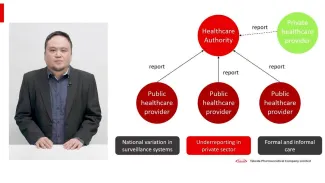When fever is not malaria in Latin America
Moreira J, Barros J, Lapouble O et al. When fever is not malaria in Latin America: A systematic review. BMC Medicine 2020; 18: 294

Non-malarial febrile illness (NMFI) is a growing concern in countries where malaria is endemic but knowledge of the prevalence and distribution of causative pathogens across endemic regions is limited.
Moreira et al. report a systematic review of published studies identifying the causes of NMFI in Latin America between 1980 and 2015.
The 625 eligible published studies identified causative pathogens by culture (n=131 [bacteria]), serology (n=339 [mainly for viruses]) or microscopy (n=62 [fungi and parasites]).
The main causes of NMFI were viruses (n=277 studies), bacteria (n=265), and parasites and fungi (n=59 and n=47 each); more than one pathogen group was identified in 24 studies. The most commonly reported causative viruses were dengue (n=171 studies), other arboviruses, and hantavirus (n=55 and n=18 each), while Staphylococcus spp., Rickettsia spp., and Leptospira spp. were the most common causative bacteria (n=82, n=70, and n=55 studies, respectively).
The most commonly reported causative viruses were dengue, other arboviruses, and hantavirus
Heterogeneity between studies, inconsistent reporting, gaps in reporting / etiological knowledge across Latin America were noted.
In conclusion, the majority (>80%) of NMFI cases in Latin America are due to bacteria and viruses, with dengue infections reported in 70% countries included in this study. Improved epidemiological surveillance (following standardized reporting), and development of pathogen-specific diagnostic tests and NMFI testing algorithms are needed.
https://bmcmedicine.biomedcentral.com/articles/10.1186/s12916-020-01746-z
VV-MEDMAT-47978


 Malaysia
Malaysia

